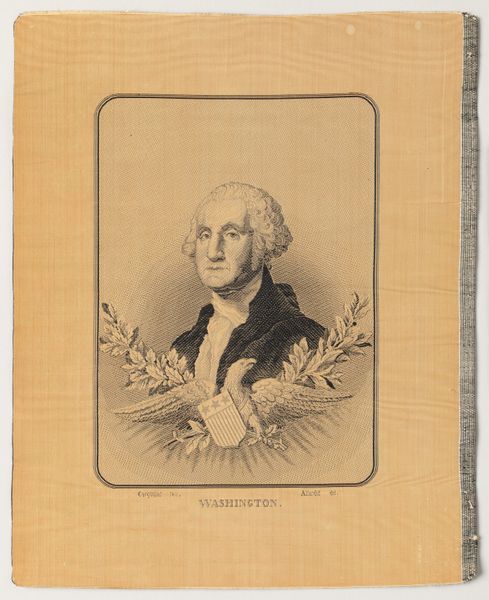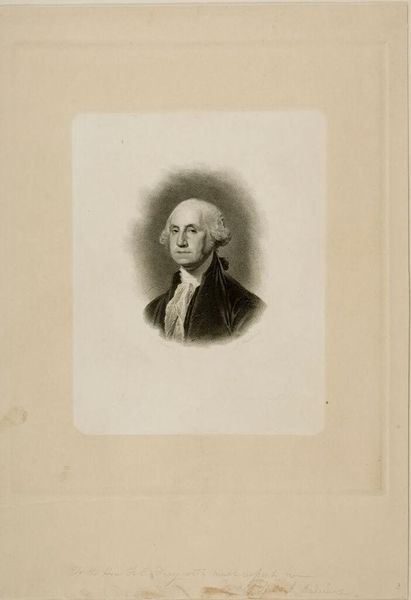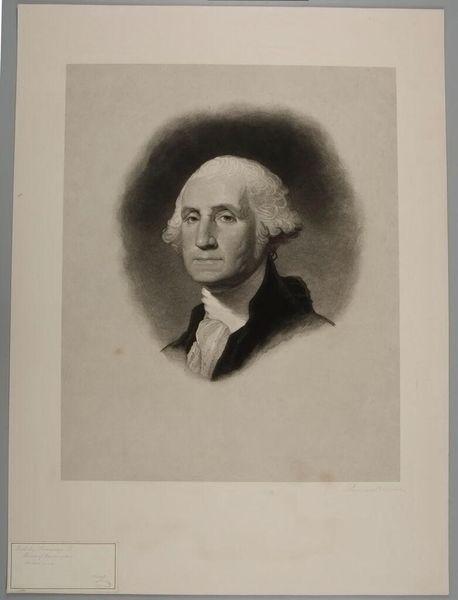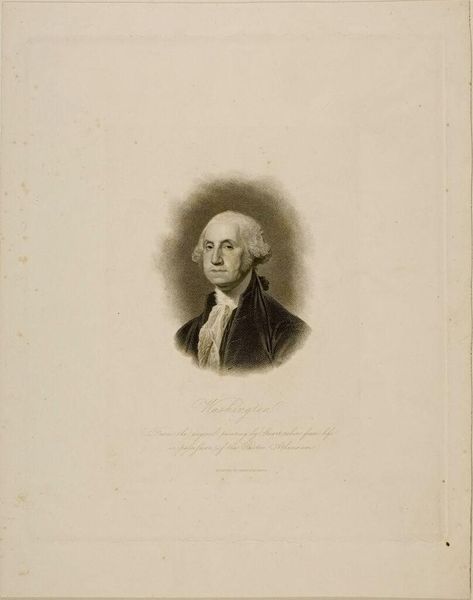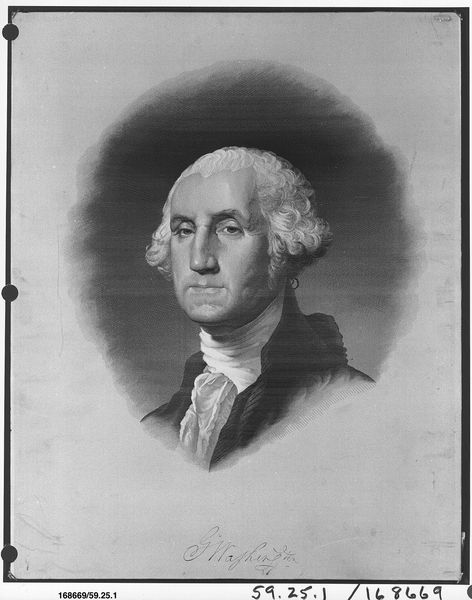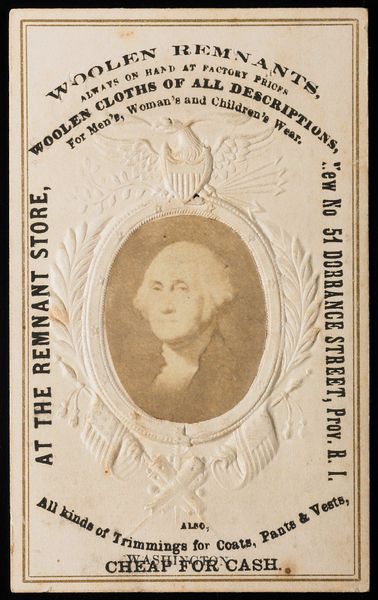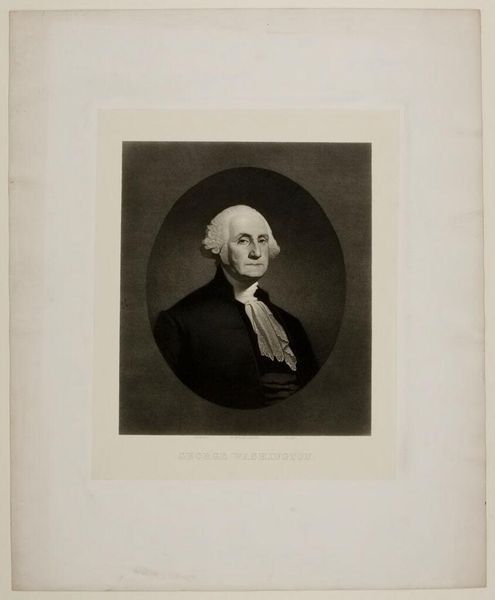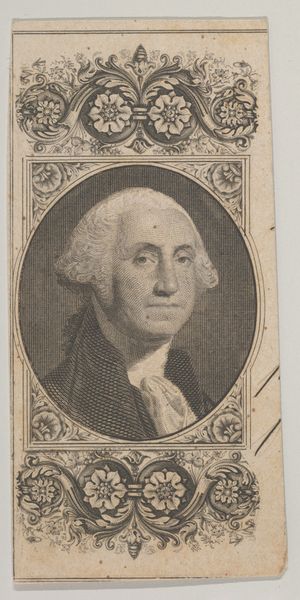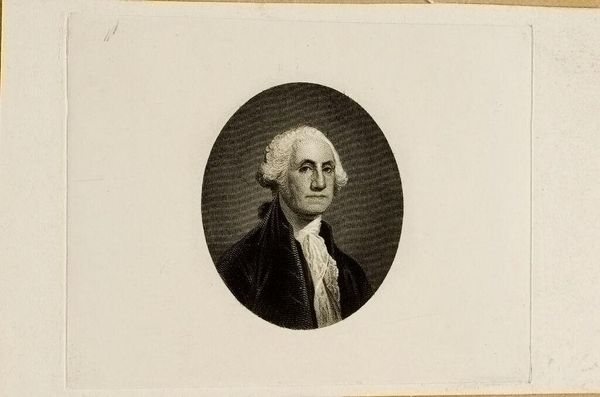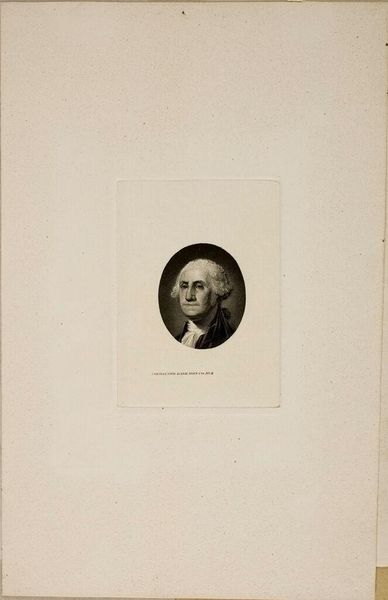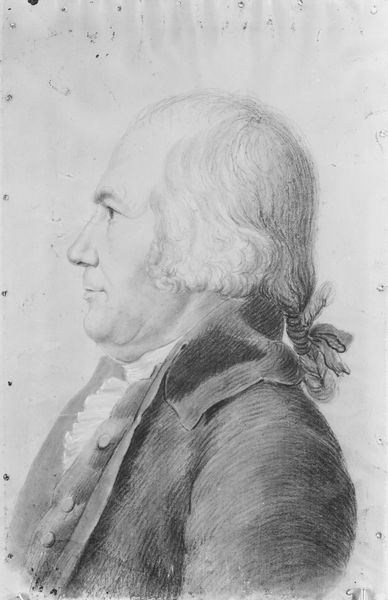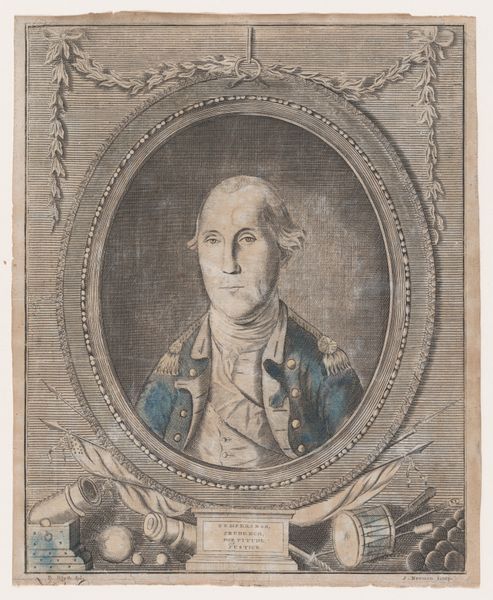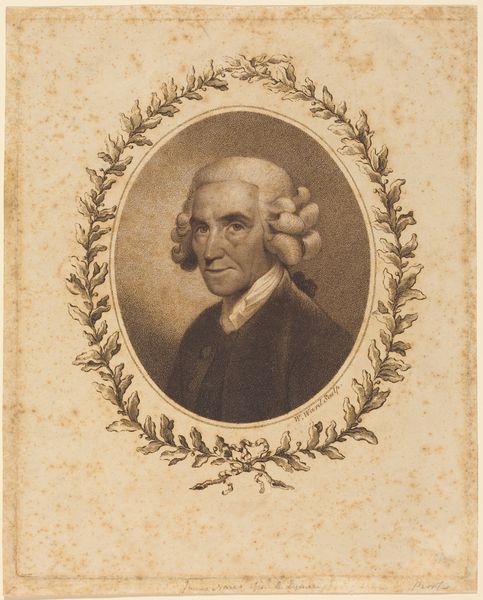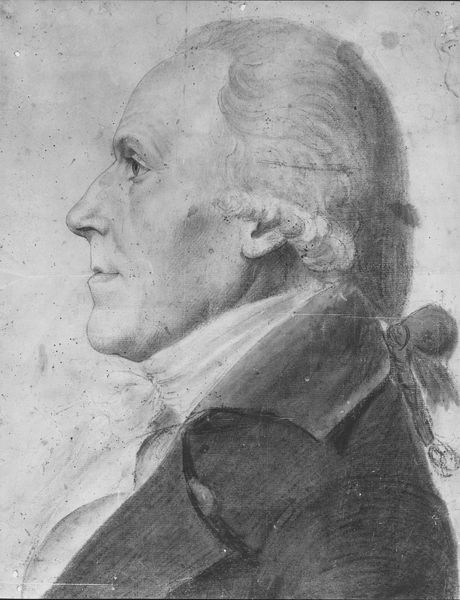
print, engraving
#
portrait
#
neoclacissism
# print
#
old engraving style
#
text
#
history-painting
#
decorative-art
#
engraving
#
realism
Dimensions: H. 11 3/8 x W. 8 1/2 inches (28.9 x 21.6 cm)
Copyright: Public Domain
Curator: It’s hard not to feel like you’re looking at history staring back at you, isn’t it? Editor: Absolutely. There's an imposing air about this old print—austere, almost severe, which isn't surprising considering its subject. Is this Allardet's "George Washington"? The years specified are broad: 1830-1865. I wonder what era influenced it most? Curator: You've got it. Yes, this engraving is attributed to Jacques Allardet. What catches my eye is the neo-classical composition; Washington is presented almost like a Roman Emperor. The print medium contributes to this aura—a kind of historical solemnity. It uses the iconography we've all come to know in representations of Washington. Note the eagle, the shield, the laurel wreaths… the symbolic weight is palpable. Editor: Yes! He's framed by symbols of state, power and legacy. He almost looks burdened by it! It's interesting that Allardet opted for this style, particularly if it was crafted closer to 1865, right in the thick of another defining era in American history. I'm captivated by what those repeated images mean at different points in American history. Curator: Context, you’re right, truly reshapes iconography. Earlier in the period, around 1830, neo-classicism might have aimed at imbuing a young nation with a sense of gravitas, drawing parallels to established empires. But by the Civil War era? Well, those symbols risk a kind of... hollowness. Editor: Right. It forces the viewer to reflect upon America's ideals versus realities, especially during a time of such intense internal conflict. Perhaps the choice of engraving contributes, with its stark blacks and whites reflecting the polarizing environment of those times. Curator: Exactly. Consider also that portraits like these played a significant role in constructing and perpetuating national myths. How did Allardet, through visual language, intend to influence popular perception of Washington? Did it reinforce a specific narrative? Editor: Definitely. I also like that it feels haunted by the past. It feels, simultaneously, immediate and very far away, a paradox in our constant effort to re-imagine the past and reconcile with its failings. Curator: Food for thought! We've perhaps uncovered how a seemingly straightforward portrait engages in layered dialogues with history itself. Editor: Beautifully put. An image of power, ripe with enduring questions.
Comments
No comments
Be the first to comment and join the conversation on the ultimate creative platform.
